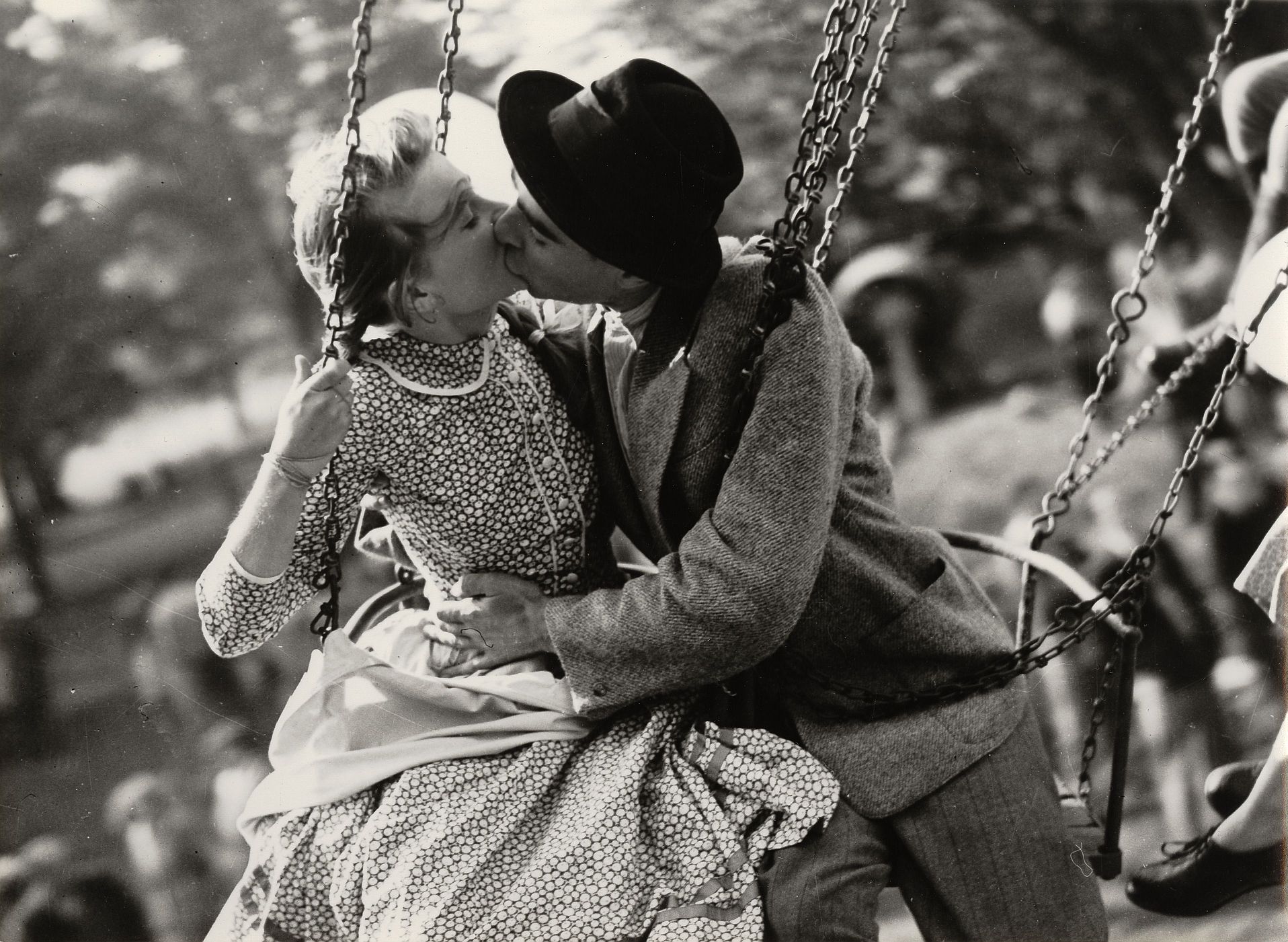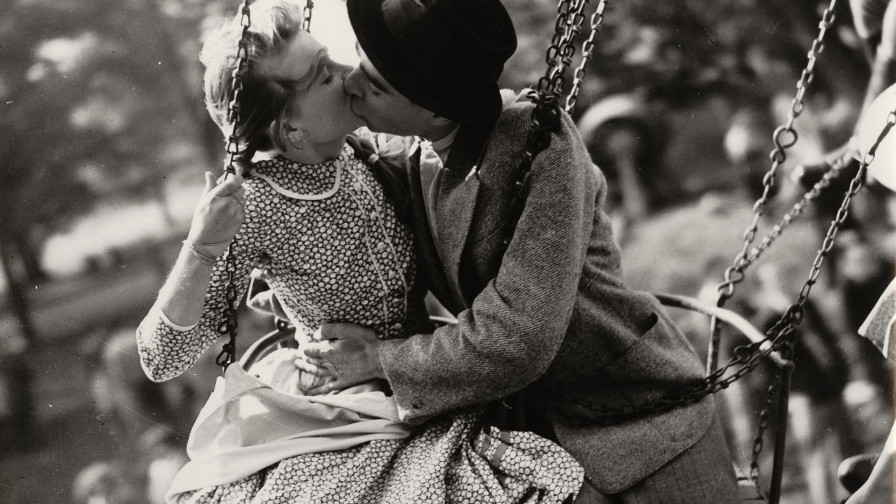Zoltán Fábri's `Merry-Go-Round' in the Cannes Classics
Back in 1956, a very young film critic, a certain François Truffaut, sparked off a minor revolution in protest of the film not having been awarded the Palm d’Or. Now, the 60-year-old Hungarian National Film Archive, which has been operating under the Film Fund since January this year, kicked off its extensive preservation programme with the restoration of ‘Merry-Go-Round’.
Zoltán Fábri, the director of the film, was born in Budapest 100 years ago, on 15 October 1917. He was a classic of Hungarian film history already during his lifetime. After István Szőts’ ‘People of the Mountains’ (1941) and Géza Radványi’s ‘Somewhere in Europe’ (1947), it was ‘Merry-Go-Round’ that introduced the world to Hungarian filmmaking. Two more films of Fábri’s, ‘Anna’ (1958) and ‘The Brute’ (1961), also entered into competition in Cannes, while his other films ‘The Boys of Paul Street’ (1968) and ‘Hungarians’ (1977) were nominated for an Oscar. Only four of his twenty-one films were not based on literary works, and his subjects were always dedicated to “the defenceless little man”.
Fábri was a renaissance artist par excellence; starting his career as a painter, he was later trained as an actor and a stage director, followed by his qualification in stage design. In 1941, at the age of 24, he was invited to direct in the National Theatre of Hungary. His first films were made in the era of schematism (Storm (1951) and ‘Fourteen Lives Saved’ (1952)). It was during the period of melting after Stalin’s death and of the first Imre Nagy government that ‘Merry-Go-Round’ was made, in 1955. The film seizes the moment when, in 1953, people were able to choose whether to farm individually or to stay within the kolkhozes.
The unprecedented novelty of the film, a clear contrast to its epoch, is apparent in two intertwined motifs. Compared to Imre Sarkadi’s short story, Fábri shifted the emphasis from social issues to individual fates. The film’s major motif is how love, passion and subtle emotions are featured. And what is just as significant is that for the first time in Hungarian film history, until then based on verbal dialogue, vision and rhythm make a breakthrough and earn worldwide critical acclaim. The conflict in the film, when Pataki (played by Béla Barsi) leaves the kolkhoz and urges his daughter (portrayed by Mari Törőcsik) to marry the rich peasant he is associated with, is exposed by the director at the outset and is held in suspense to the very end. In the short story, however, this motif only serves as a flashback for the sake of social analysis, as recalled by the married life of the lovers.
Törőcsik’s softened, radiant close-ups arise from among the naturalistic images of the fair, where her father promises her to the rich suitor (Ádám Szirtes). The subsequent merry-go-round scene, in the virtuoso shots manually taken by the cameraman Barnabás Hegyi, accumulates to a metaphor of happiness to which the director adds visual and musical analogies. The vitalisation of space is accompanied by modernist motifs such as the metaphor of “mud-Hungary”, one of sociographic authenticity expressing social despondency and in which Törőcsik’s character surrenders to her father’s greedy terror.
Consisting of 77 cuts, the dance that the lovers perform at a wedding party of the neighbourhood, publicly owning up to their revolt, has become iconic in Hungarian cinema. The csardas and the cuts start deliriously whirling about, in contrast to the petrified outside world. Ever-tightening shots highlight the shocked groom’s hands as he clings to his glass, the father’s menacing expression and the mother’s anxious face. The long shots are also counterpointed by close-ups of the dancers. When the happiness montage of the merry-go-round fades in, its image features the girl’s state of consciousness. No one says a word.

Merry-Go-Round by Zoltán Fábri
‘Merry-Go-Round’ is the summit of the transition era. It was due to the film’s impact that a much more natural standard of directing, shooting and acting, based on visual language, took shape in the history of Hungarian cinema. Fábri’s discovery of Mari Törőcsik, then only a second-year college student, and the marvellous way in which he guided the actors are ample evidence of his talent. In both votes so far, Hungarian film critics have placed ‘Merry-Go-Round’ among the 12 best of Budapest (1968, 2000).
Mari Törőcsik remembers Imre Soós: “Even the very best actors are only talented at the beginning of their careers; it is through their life and experience that they become great. I knew a single wonderful exception, Imre Soós, who all at once knew everything from the get go.” The French papers that reported from Cannes called Soós the “Hungarian Gérard Philipe”. And a very young film critic at the time, a certain François Truffaut, talked of Törőcsik. Regardless of the jury, he set up a ranking of his own, and besides awarding the Palm d’Or to the film, he would have also awarded the Best Actress award to the 20-year-old who had just featured in her first film. Törőcsik was eventually officially awarded the prize twenty years later for her performance in ‘Mrs. Dery Where Are You?’ (1976).
Due to the serious damage that the camera negative had suffered, as well as its resulting deficiencies, the real beauty of the film has only been able to be recovered through the present digital restoration, the works of which took four months in the Hungarian Film Lab.
Eszter Fazekas
